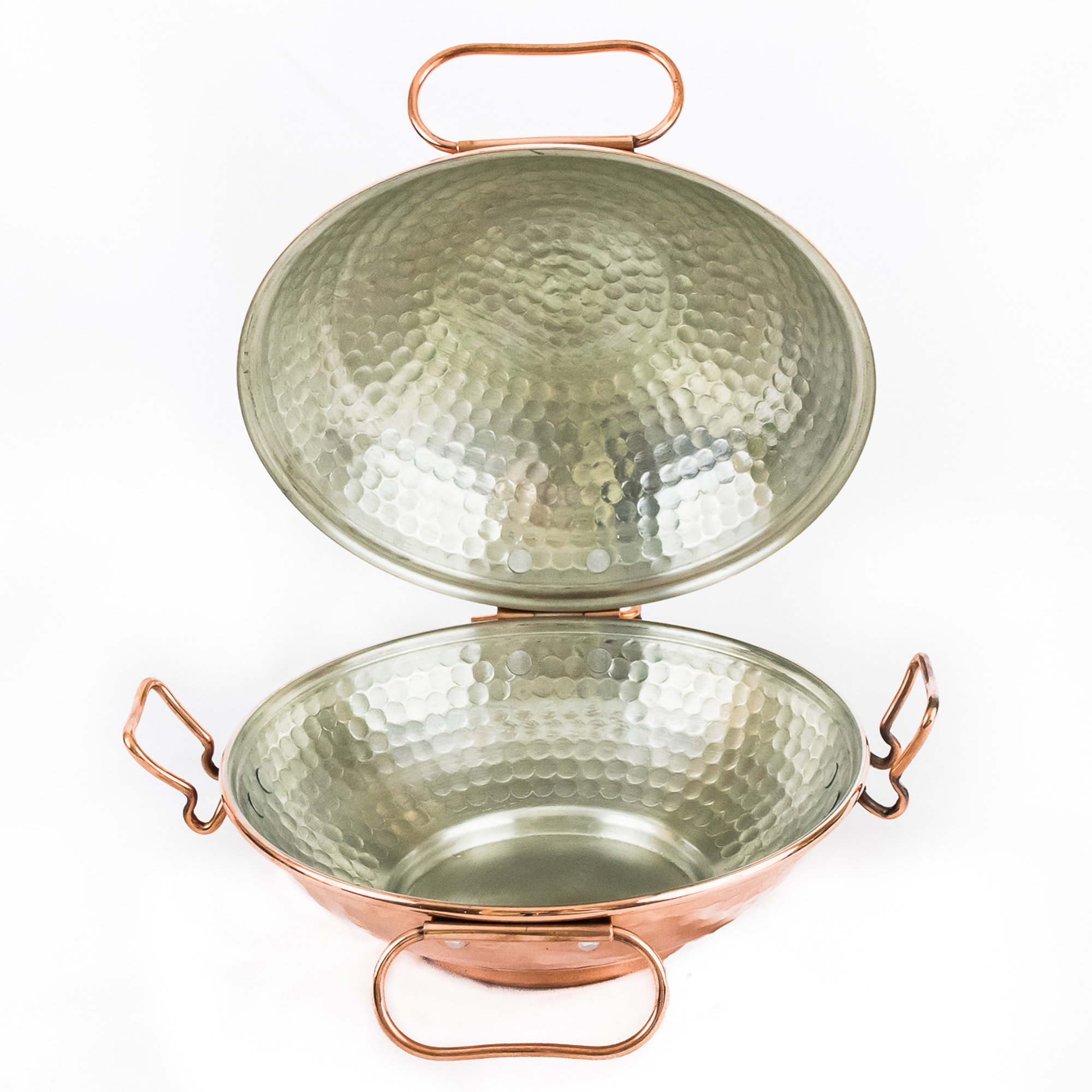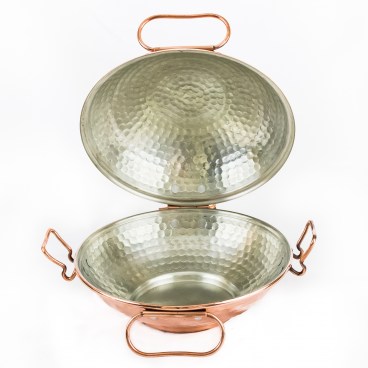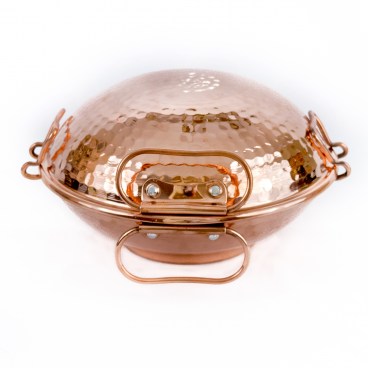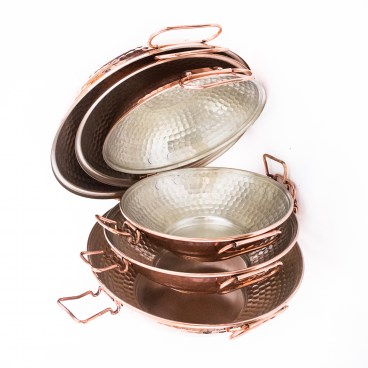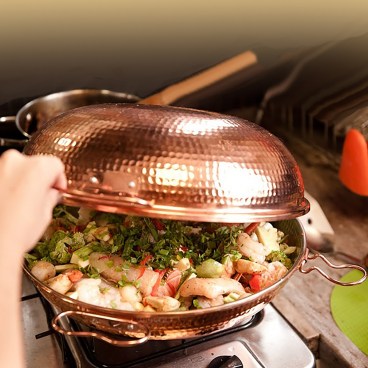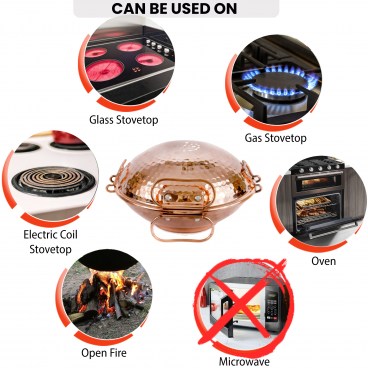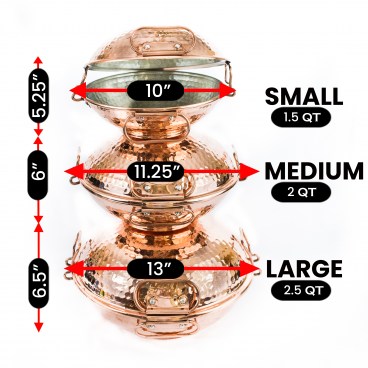The Portuguese Cataplana is meant for use on a stovetop or open flame, but can be placed in a conventional oven (not microwave) if desired. Despite the shiny appearance of our Portuguese Cataplana, there is no glaze or polish used, so simply wash it with mild soap and water prior to its first use.
Assemply Instructions:
To use the Cataplana, remove the pin that comes attached to one of the halves of the cataplana. Invert one of the sections and place the two sections next to each other at the hinge, aligning the two hinges in position. Insert the pin across all sections of the hinge. Close the two halves keeping the flat side as the bottom. Once the ingredients are placed in the pan according to the recipe, to seal in the flavors, close the lid of the Cataplana and secure it with the locking clamps on either side. You should never place an empty Cataplana onto heat or fire in order to ensure the long life of the tin-lined interior.
Cleaning:
To clean after cooking, hand washed with mild soap and a soft sponge or washcloth, drying it immediately to avoid stains. You should not use steel wool or scouring pads as they may damage or scratch the surface. You should also avoid harsh detergent or dishwashers as these may accelerate the oxidation process of the outer copper lining and reduce the life span of the vessel. For food that is stuck on, allow the pan to soak overnight in water with a few drops of dishwashing liquid. For especially tough stains on the inside tin surface, use a paste made of vinegar and baking soda. Apply the paste with a soft cloth or sponge and let it sit for a short while. Rub the stain until it is gone the wash completely with mild soap and water and dry immediately. Do not any use metal utensils while cooking as these could scratch the surface.
Over time, the outer copper layer will naturally darken and develop what is called a “patina”. To remove the patina, you can rub the outside with a vinegar-salt solution. To keep the exterior looking new, you can also use a copper polish and follow the manufacturer’s instruction.
Likewise, tin will darken and smooth over time. This is actually a good thing and will improve the pan’s performance. However, if you like the tin lining shiny, you can keep it that way using a galvanic technique. To do so, fill the pan with water and bring to a boil. Removing it from the heat and dissolve 1 – 3 Tbsp. each of non-iodized table salt and sodium bicarbonate (baking soda). Place a large sheet of aluminum foil folded several times inside the water and weight it down with a wooden spoon (or other non-metallic object) leaving it for about 30 minutes. The combination of ingredients will cause an oxidation reaction which will result in brightening of the tin.
